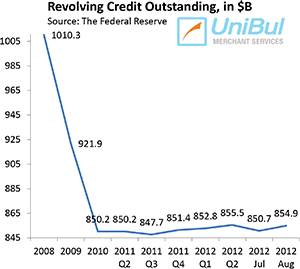Verifying Signatures in Credit Card Transactions

Store-front merchants have the advantage of accepting payments in a face-to-face environment, which allows them to physically inspect their customers’ signatures. Moreover, industry regulations require that merchants compare signatures on sales receipts to the ones on the back of the cards used by their customers and make sure they belong to the same person. Complying with this requirement will help you minimize fraud and chargebacks.
During the check-out process, while waiting for authorization and for the customer to sign the sales receipt, you should keep the card in your possession and examine the signature on its back. You should also inspect and compare the name and account number. Once the receipt is signed, compare the signature on it to the signature on the back of the card. It is a simple procedure and you should do the following:
- Compare the name and last four digits embossed on the card to the name and last four digits on the sales receipt. Your terminal should be set up to only print the last four digits of a card number for security purposes. The other twelve digits should be truncated.
- Compare the signature on the back of the card to the signature on the sales receipt. The first initial and spelling of the surname must match. If there is a mismatch, ask for additional identification, such as a driver’s license or contact your processing bank for instructions. The signature would not match if the signature panel were signed “John R. Smith” and the sales receipt – “Mark Smith” or “K. Smith.” The signature would be acceptable if signed “John R. Smith,” J. R. Smith” or “John Smith.” The signature would also be acceptable if a title such as Mr., Mrs., or Dr. is missing or is included.
If the two signatures do not match, the transaction should not be completed. If you accept the transaction and it turns out to be fraudulent and charged back to you, you may be liable for the chargeback and lose your re-presentment attempt, even if the transaction was properly authorized. Be advised also that the name, embossed on the front of the card does not have to match the signature.
Whenever a merchant determines that there is enough evidence to indicate that a transaction may be fraudulent or that the signatures do not match, he or she should take one of the following actions:
- Ask the customer for a second signature to be compared again to the one on the back of the card.
- Make a Code 10 call with your processor’s voice authorization center and follow the instructions the representative gives you.
Signatures are not required for card-present transactions where a Personal Identification Number (PIN) is used as a cardholder verification method. In the U.S., PIN transactions are the exclusive domain of debit cards. In Europe and elsewhere, however, chip-and-PIN credit cards have been replacing the traditional credit card system that works by swiping a card with a magnetic stripe and signing a sales receipt. It is not clear if and when these cards will make their debut on this side of the Atlantic, so in the mean time merchants will have to continue to physically inspect signatures.
Image credit: Yours.co.uk.


